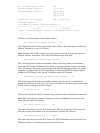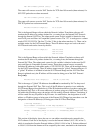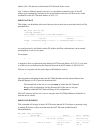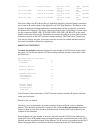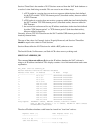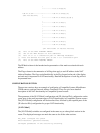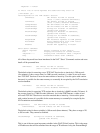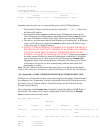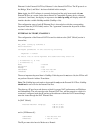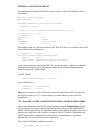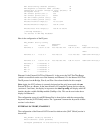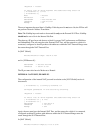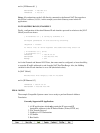INTERNAL NAT PORT, EXAMPLE 1
The configuration of the Internal NAT Port and its relation to the [NAT Global] section is
shown next.
Nat_2220> config ip ethernet 1
Enter Password:
Configure parameters in this section by entering:
<Keyword> = <Value>
To find a list of valid keywords and additional help enter "?"
[ IP Ethernet 1 ] # list
[ IP Ethernet 1 ]
RIPVersion = V2
Mode = Routed
SubnetMask = 255.255.255.224
IPAddress = 10.5.3.1
The NatMap is not set to On for this Internal NAT Port. It is still set to its default value of Off
and not listed in the configuration.
[ IP Ethernet 1 ] # NatMap = ?
The keyword 'NatMap' expects Boolean values:
Default: Off
Valid Values: True/False, On/Off, 1/0, or Yes/No.
Help String: Enable Network Address Translation
Again, the user must have the Internal NAT Port, and the Network to which it is connected,
configured such that IP packets with addresses within the NAT Internal Range enter the
router through the NAT Internal Port.
In [NAT Global]:
Entered Internal range(s): 10.5.3.0/27
and in [ IP Ethernet 1 ]:
SubnetMask = 255.255.255.224
IPAddress = 10.5.3.1
Note: All workstations on the LAN directly connected to the Internal NAT Port must have
this IP port's address (10.5.3.1, in this example) set as their Gateway route in their IP
applications.
[ IP < Section ID > ] PORT CONFIGURATION FOR NAT FOR EXAMPLE THREE
This is the configuration of the NAT Router in the more complex Example Three that has
NAT configured on a physical port that has sub−interfaces. Again see the IMPORTANT
NOTE concerning the version of Compatible Systems router software required to use NAT on
physical ports which have sub−interfaces configured. The [NAT Global] configuration and
the [IP <Section ID>] configuration are shown below to demonstrate the "agreement"
between these two sections of the device configuration.
Here is the [NAT Global] configuration section.
NAT_2220R1> show nat config



